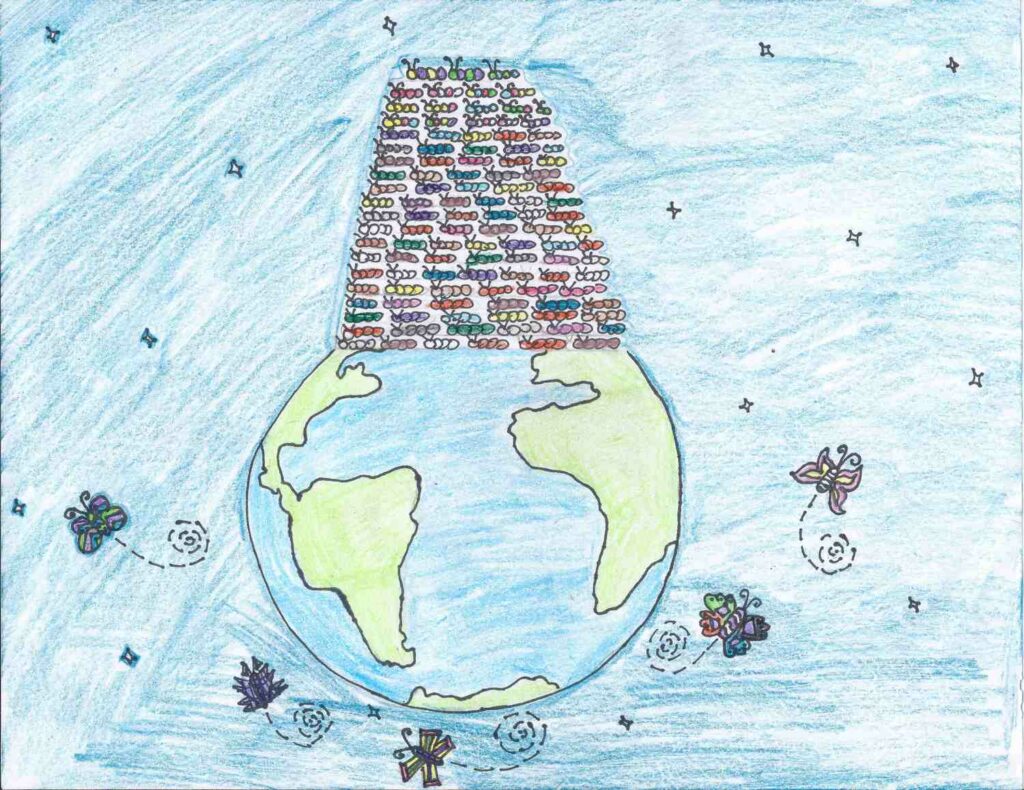17 Jul 6. The Caterpillar Culture

“As long as people believe in absurdities, they will continue to commit atrocities”
The Caterpillar culture is the culture of the overweening, chest-thumping human ego. It is a culture that celebrates the Participant, the wishing child under the Cosmic Fig Tree, and works to meet its every demand regardless of the consequences to Life on Earth. It is a culture rooted in the exceptionalism of the human species that originated in the industrial West and it is now sweeping throughout the world, assimilating and devouring indigenous cultures everywhere. Says Wade Davis of the National Geographic, “Just as the biosphere has been severely eroded, so too is the ethnosphere — and if anything, at a far greater rate. No biologists, for example, would dare suggest that 50 percent of all species or more have been or are on the brink of extinction because it simply is not true, and yet that — the most apocalyptic scenario in the realm of biological diversity — scarcely approaches what we know to be the most optimistic scenario in the realm of cultural diversity[1].”
Half the indigenous cultures of the world that existed 50 years ago are already extinct as of today, taking with them not just their unique languages but also the stories that wove the fabric of those cultures and the wisdom encapsulated in those stories.
When industrial civilization began in the 17th century, factory owners quickly discovered the advantages of standardization and specialization; standardization so that the same parts can be used for different products and specialization where workers with the most aptitude for a certain task get assigned to that task continuously. The owners’ profits maximized with such specialist assignments on the assembly line. However, having to do the same thing over and over drove the workers nuts, and as a result, absenteeism was rampant in the early stages of the industrial revolution. To reduce absenteeism, the factory owners realized that they needed to keep the workers fearful and insecure about the future, and to make them dependent upon their salaries for their subsistence. They needed the workers to find themselves in an environment of scarcity. Even children were cruelly exploited to support the factory system in its early days[2].
Modern industrial civilization has progressed into a gargantuan version of this 17th century English factory, with a hierarchical, pyramidal organizational structure with individuals, corporations and institutions as components. Individuals are farmed through the educational system to find their niche within this pyramidal structure. They are “standardized” with the awarding of diplomas and degrees and their skill sets are specialized through their branches of learning. The pyramid is made up of the supply chain of resources for the products of the civilization and people position themselves all along the supply chain, feeding off the profits. Therefore, the pyramid is hierarchically layered with Nature at the very bottom, poor people most concentrated just above Nature, and the wealthy typically occupying higher layers of the structure. Wealth is extracted from Nature by the very poor and it trickles up to the top. Depending upon the level that they occupy in the hierarchy, individuals get to sample more or less of the wealth that is trickling – some would say, gushing – up to the top. But the most important component of this pyramidal structure that defines the Caterpillar culture is the modern corporation. Of the top 100 economies in the world, 51 are corporations[3]. And executives do things on behalf of their corporations that they wouldn’t dream of doing to their neighbors in their private lives. For though they are accorded the same privileges as persons in the United States, modern corporations are expected to behave like quintessential Caterpillars.
[1] Wade Davis, “Endangered Cultures,” 2003. http://www.ted.com/talks/wade_davis_on_endangered_cultures.html [2] Laura Del Col, “The Life of the Industrial Worker in NIneteenth Century England,” West Virginia University, http://www.victorianweb.org/history/workers1.html [3] Ranking as of 2000 taken from Sarah Anderson and John Cavanaugh, “Report on the Top 200 Corporations,” from Institute for Policy Studies, 2000. http://www.corporations.org/system/top100.html



 Let’s work together, and work fast, or by 2026 it will be too late. The damage done will be irreversible. We can do it.
Let’s work together, and work fast, or by 2026 it will be too late. The damage done will be irreversible. We can do it.
No Comments